Geoscience Reference
In-Depth Information
Zonal wind (m sec
21
)
250 km
40
8.0
32
100
2.9
150
50
24
16
2
1.7
150
0
25.9
2
200
2
50
8
0
10.0
250
214.0
2
8
16
18.1
100
50
222.3
226.9
2
100
0
24
250
32
2
32
12
14
16
18
20
22 00
Local time (hrs)
02
04
06
08
10
12
(a)
40
32
8.0
2.9
100
50
150
24
16
2
1.7
200
0
2
5.9
8
2
10.0
350
250
2
50
0
2
50
2
14.0
0
300
8
16
2
18.1
2
100
222.3
2
50
24
32
26.9
100
250
2
32
12
14
16
18
20
22 00
Local time (hrs)
02
04
06
08
10
12
(b)
Figure 3.29
Contours of the zonal neutral wind at 250 km, calculated from the thermo-
spheric model as a function of latitude and local time: (a) without the postsunset enhance-
ment of the
E
B
drift velocity and (b) including the postsunset enhancement. [After
Anderson and Roble (1974). Reproduced with permission of the American Geophysical
Union.]
×
occur due to auroral disturbances, it is easy to see that weather in the equatorial
thermosphere is also related to weather in the solar wind.
Another variable is the effect of enhanced high-latitude atmospheric heating
during auroral storms. Models have shown that large-amplitude gravity waves
can be created that propagate throughout the thermosphere, forming so-called
traveling ionospheric disturbances. In extreme cases the worldwide wind patterns


































Search WWH ::

Custom Search